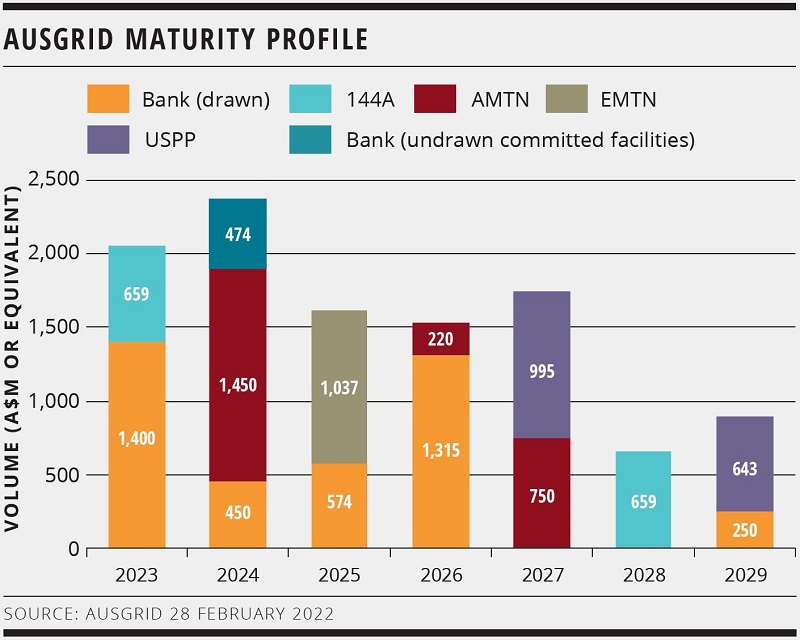Corporates may put offshore issuance on hold until H2
Market uncertainly could see corporate issuers hold off on offshore funding plans until the second half of 2022, according to frequent domestic and offshore issuer Ausgrid. Geopolitical concerns and rising inflation are hard to ignore.
Ausgrid is a global issuer and has active programmes in the US, European and Australian markets (see chart). It has been a frequent issuer since its privatisation in 2016 and aims for diverse sources of funding.
Its last foreign-currency print – a €525 million (US$845 million) transaction in 2021 – was a proactive issue aimed at capitalising on favourable market conditions and getting ahead of a June 2022 bank debt maturity, says Ed Waters, Sydney-based group treasurer at Ausgrid. The issuer also wanted to be active ahead of what it anticipated could prove to be a more challenging issuance environment during 2022.
Ausgrid expects the coming six months to be difficult and not something it would want to tackle in global funding markets, Waters says. “We knew what was coming from the inflation expectations – with spreads moving wider and the accompanying uncertainty I believe investors will be less active in debt transactions,” he tells KangaNews.
The return of financial institutions to offshore issuance markets and the influence this could have on relative spreads and overall funding cost was also a concern, Waters adds. There is also likely to be near-term uncertainly and volatility as the market adjusts to operating in an upward rates cycle.

We knew what was coming from the inflation expectations – with spreads moving wider and the accompanying uncertainty I believe investors will be less active in debt transactions.
For these reasons, Waters believes many Australian issuers will be hesitant to conduct any material capital market funding until the second half the year. “Most market users have become used to operating in a falling interest rate environment over many years, which has meant much less volatility. I think there will be an adjustment phase in which credit margins widen before the market plateaus again.”
While Ausgrid is well ahead of its funding task and does not have any maturities until the middle of 2023, Waters says it will continue to monitor market conditions on a weekly basis. “We have a significant debt book and offshore markets are a key part of our strategy, so we will continue to assess all markets and look for good opportunities,” he notes.








